
A proud recipient of the
Colorado Parks & Wildlife
Landowner of the year award.
Colorado Parks & Wildlife
Landowner of the year award.
Colorado Parks and Wildlife Landowner of the Year Award
Description of the LK Ranch Operation and Current Management
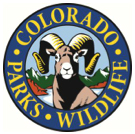
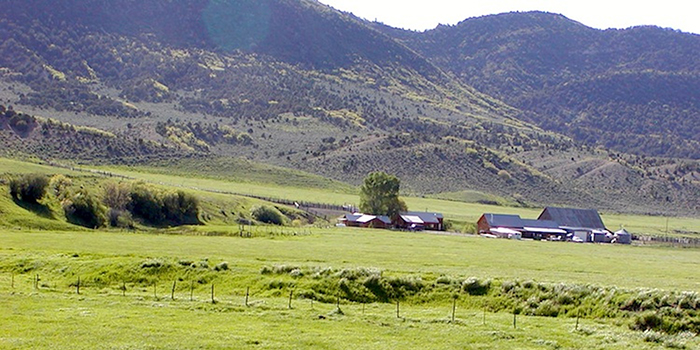


The LK Ranch lies approximately 8 miles southeast of Meeker, Colorado, in Rio Blanco County. The LK Ranch is cooperatively owned and managed by Lowell and LoAnn Klinglesmith and their youngest son Lenny and his wife Jackie Klinglesmith.
The Klinglesmith family has developed a stellar history and record with local Colorado Division of Wildlife (CDOW) / Colorado Parks & Wildlife (CPW) in terms of having strong wildlife conservation and land management ethics which have been demonstrated through their significant long-term efforts to protect the outstanding wildlife conservation values of various properties including the LK Ranch with perpetual conservation easements which have been funded by a variety of sources (GOCO, NRCS, CDOW, etc.) and are held by the Yampa Valley Land Trust. The Klinglesmith family has worked cooperatively with CDOW/CPW since 2007 in order to successfully implement an integrated wildlife habitat and livestock management program as part of the CDOW conservation easement management plan for various parcels of the LK Ranch property.
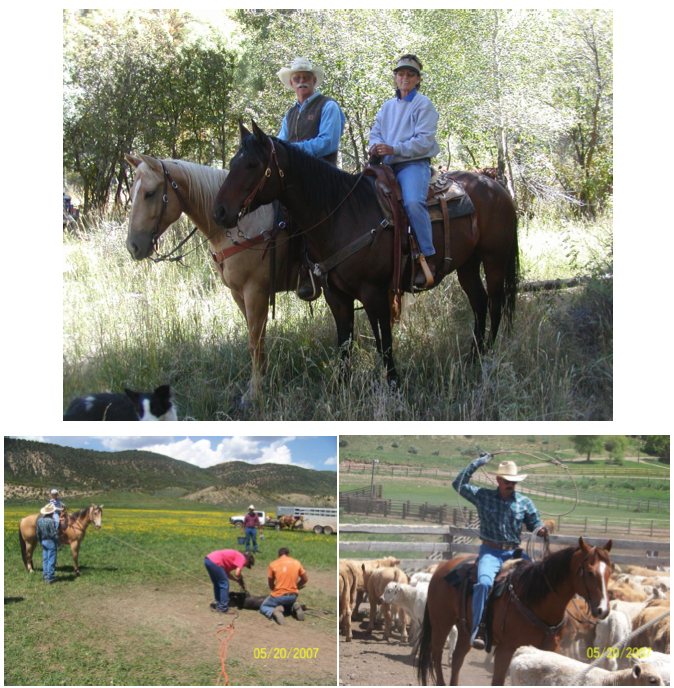
The Klinglesmiths are the epitomy of the rural, hard working, honest, cattle ranching lifestyle and they serve as tremendous role models for all agricultural producers and private landowners in northwestern Colorado and beyond. All of the Klinglesmiths are well respected and are active in the local community of Meeker and Lenny Klinglesmith was recently appointed in 2012 to serve as the landowner/cattlemen representative on CPW’s local White River Habitat Partnership Program (HPP) Committee. The White River HPP committee has been very successful at fostering working relationships with local private landowners to improve wildlife habitats and resolve big game conflicts.
In January of 2012, the Director of CDOW and the Wildlife Commission honored the Klinglesmiths long- term efforts and commitments to wildlife conservation by allowing enrollment of the LK Ranch property into the Ranching For Wildlife (RFW) Program at the Tier A status/placement level which is extremely rare. The Klinglesmiths were allowed to initially enroll their LK Ranch property into the CDOW’s Ranching For Wildlife program with Tier A placement and status due to their exemplary livestock/habitat management practices and the perpetual conservation easements that the Klinglesmith family has implemented on the LK Ranch property.
The LK Ranch consists of approximately 13,000 contiguous deeded acres that are owned by the Klinglesmith family in game management unit 23. See attached and detailed topo map which depicts the property boundaries and location of the LK Ranch, which was enrolled into CPW’s Ranching for Wildlife (RFW) program in 2011. The attached map shows the total deeded and leased acreage (private) of the LK Ranch RFW operation, and also depicts multiple land locked federal in-holdings of public land (BLM and USFS) and surrounding land ownerships as well. The 13,000 acre LK Ranch RFW operation consists of approximately 12,000 contiguous deeded acres that are owned by the Klinglesmith family in game management unit 23 plus another 1,120 acres owned by Michael and Mary Grady which are leased by the Klinglesmith family for a total enrollment of approximately 13,120 acres in the LK Ranch RFW program. The LK Ranch varies in elevation from approximately 6,400 to 8,200 feet, with precipitation ranging from approximately 13” to 20” per year. This diverse property supports a diverse range of plant communities including sagebrush, mountain shrub, aspen and conifer forest with riparian bottoms along several major drainages. Upland vegetation consists primarily of sagebrush and mountain shrubland communities interspersed with pinon-juniper woodlands at the lower elevations and aspen/conifer communities at the upper elevations.
While the 13,000+ acre LK Ranch property provides substantial wildlife value in and of itself, additional value is created when the property is considered within its regional context on a landscape scale. It is important to understand that as of June/July, 2011, the entire LK Ranch property complex, 13,000+ acres, has been protected via perpetual conservation easements that the Klinglesmith and Grady families have negotiated in multiple parcels in the past with a variety of entities including the CDOW/CPW, GOCO and the Yampa Valley Land Trust. The LK Ranch property provides regional connectivity between other protected landscapes that are critically important to wildlife populations in NW Colorado. The LK Ranch property is surrounded by White River National Forest to the south, L07 Hill/Mountain to the north (BLM), the Grand Hogback to the west (BLM), and Oak Ridge SWA (state property) to the northeast, all of which are incredibly important wildlife habitats.
The LK Ranch area is utilized on a year-round basis by elk and mule deer and a wide variety of other wildlife species including but not limited to greater sage-grouse, mountain lion and black bear.
The historical land uses on the various parcels that are currently managed/owned by the Klinglesmith family as LK Ranch have been domestic cattle grazing and agriculture. Irrigated pastures in the lower elevations along Flag Creek are used to produce/harvest grass hay that is necessary to feed the domestic cattle herds throughout the winter. Some alfalfa has also been planted on the LK Ranch at lower elevations along Flag Creek. Upland pastures and habitats at the mid to upper elevations of the ranch have traditionally been utilized seasonally by domestic cattle throughout the year in conjunction with public land cattle grazing allotments on the adjacent White River National Forest.
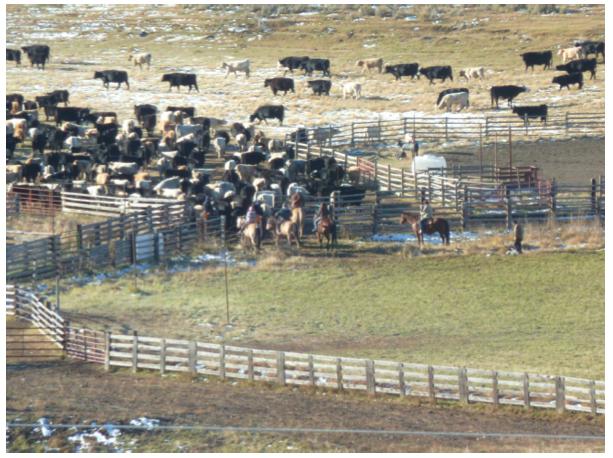
The Klinglesmith family has very effectively and strategically utilized funding obtained from perpetual conservation easement negotiations in the past in order to purchase neighboring ranch parcels that were merged with their original 3,700 acre base ranch operation along Flag Creek. Between 2007 and 2011, the Klinglesmith family successfully established perpetual conservation easements on each and every portion of the LK Ranch operation (13,000+ acres) which has outstanding wildlife values, and which by existence of the conservation easements provides perpetual preservation and protection of critical mule deer, elk and sage grouse habitat. The Klinglesmith family has negotiated multiple perpetual conservation easements that have protected a significant portion of critical wildlife habitat in NW Colorado.
The Klinglesmith family has demonstrated a long history of ranching heritage with a strong conservation ethic in the local community of Meeker, Colorado. The Klinglesmith family has served as a strong role model within the local agricultural community and together with CPW they have proven that wildlife managers and private landowners can accomplish tremendous things when they work together in a cooperative fashion.
Gradually, over the past 10 years or so, through various land acquisitions the LK Ranch operation has grown to approximately 12,000+ contiguous deeded acres in total (see attached map). In addition, the Klinglesmiths have also leased the cattle grazing and big game hunting rights on the 1,120 acre property owned by Michael and Mary Grady which is adjacent/contiguous to the LK Ranch property.
Competition for forage resources between big game and livestock has been an issue in the past for landowners, wildlife managers and land management agencies in the Meeker area. Stocking rates for the domestic cattle operation on the LK Ranch property vary depending on the season, pasture/location, annual precipitation patterns, range condition and current goals and objectives; however, in general, the Klinglesmith family is currently running approximately 1,000 cow-calf pairs on the 13,000+ acre LK Ranch property. Obviously, this stocking rate could change annually in terms of the number of head of cattle and class/type of cattle that are run on the LK Ranch depending on the goals/objectives of the Klinglesmith family, cattle markets/economy, and climatic conditions. The Klinglesmiths have been very effective at implementing a short duration, high intensity rotational cattle grazing system across the landscape that has maintained the quality and diversity of the forage resources and wildlife habitat values on the LK Ranch; this grazing system has been very successful at meeting the needs of the domestic cattle operation, sustaining the quality of critical wildlife habitats and maintaining a high quality big game hunting operation on the LK Ranch. It is important to note that the Klinglesmiths are able to implement this sort of high intensity, short duration cattle grazing system on their LK Ranch property because they have a public land cattle grazing allotment on the adjacent White River National Forest and other private/state grazing leases which offers them a larger landscape and more flexibility to operate within.
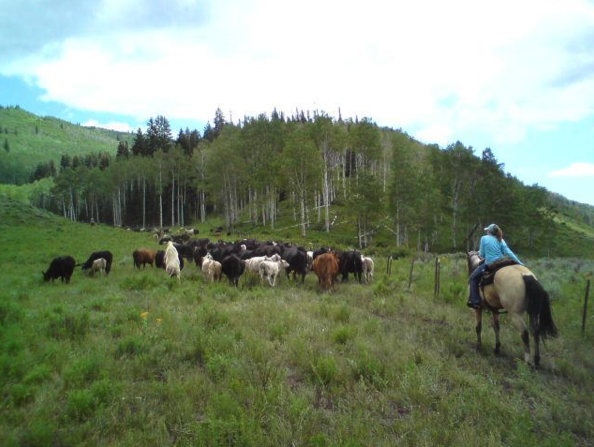
Livestock/cattle grazing continues to be the primary agricultural use on the LK Ranch property. The cattle grazing and wildlife/hunting management on the 13,000+ acre property was finally consolidated under one management entity in 2010, which has allowed the Klinglesmith family to work closely with CPW to cooperatively manage the property for the benefit of livestock, wildlife and hunting. Livestock/cattle grazing is the most important factor and/or tool available for wildlife habitat manipulation on the LK Ranch property. Monitoring and implementation of a rotational cattle grazing system that balances the needs of the livestock operation with the requirements of the wildlife management and recreational hunting operations is the most important management practice on the LK Ranch property. Collaboration, cooperation, intensive monitoring,
 and adaptive livestock grazing management strategies are implemented annually by the Klinglesmiths and the CPW in order to meet the long-term goals and objectives of the perpetual conservation easement and RFW management plans. Benefits from a well designed, short duration, high intensity cattle grazing system include reduced grazing pressure on riparian areas, better distribution of livestock across the landscape, and high quality forage/regrowth for wildlife during critical periods. The Klinglesmith family has mastered the art of utilizing livestock grazing across the landscape as a tool to improve the quality of the herbaceous forage available for wildlife on the LK Ranch.